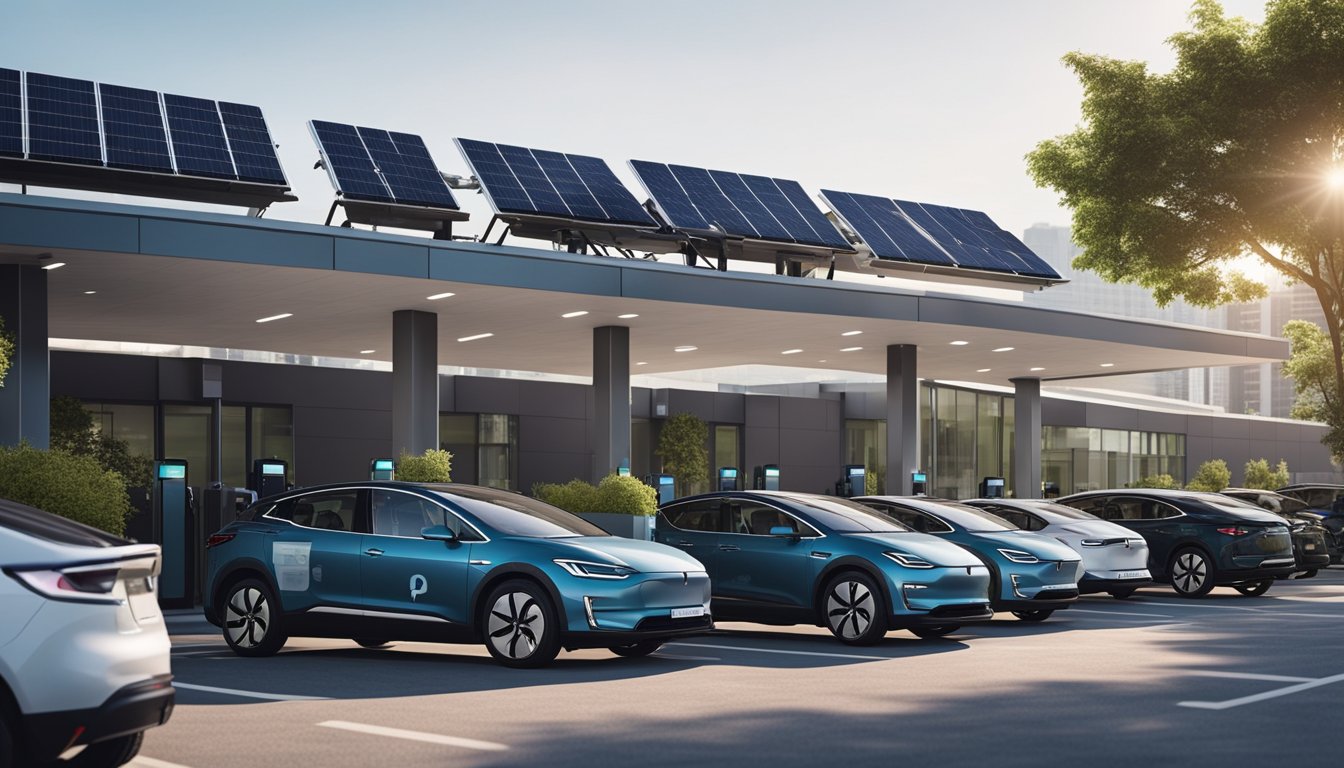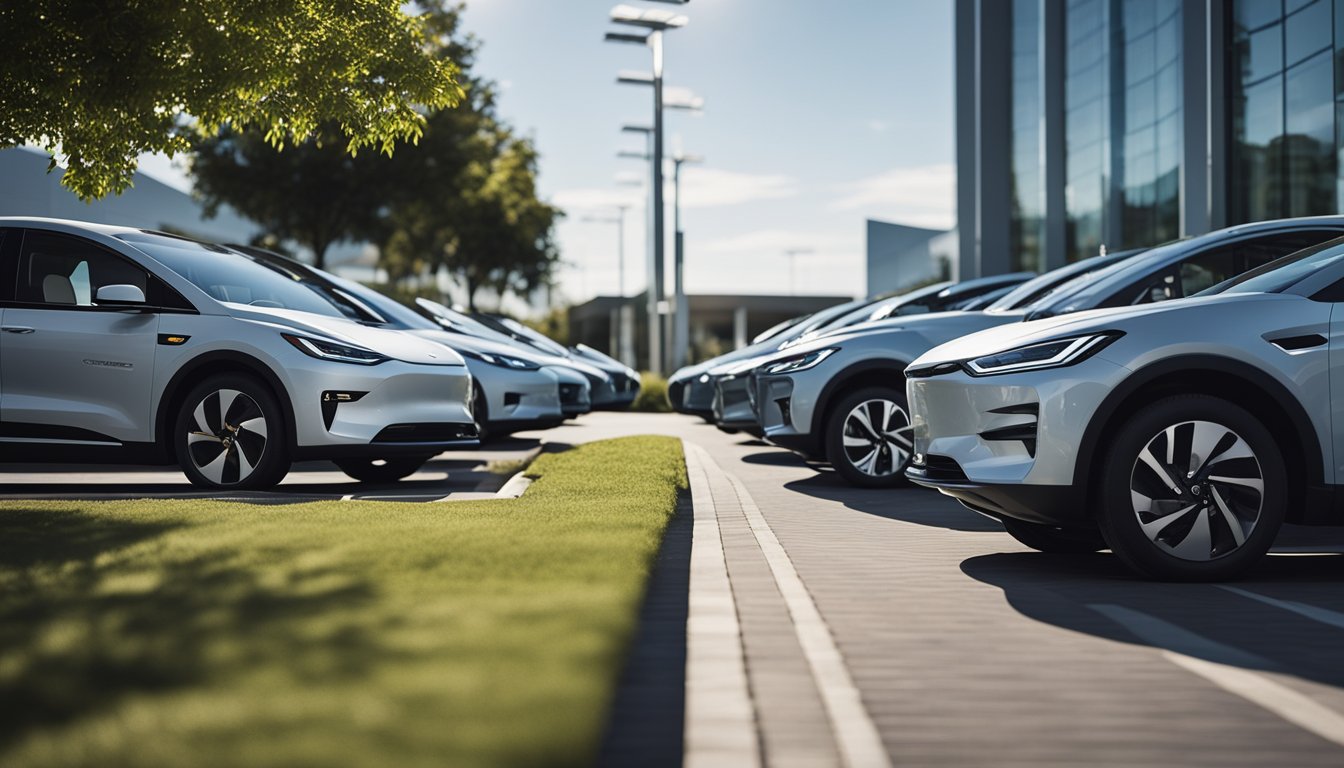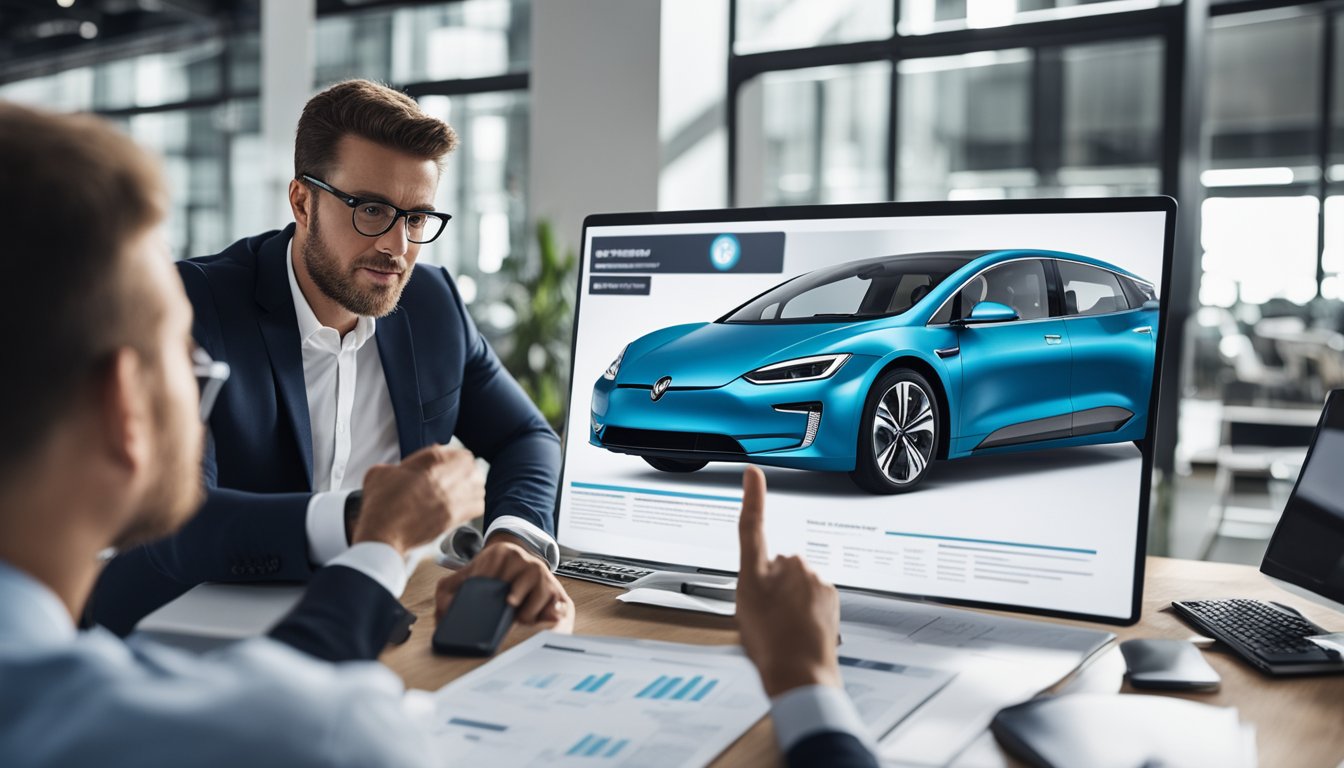Late updated: 11 Nov 2024 14:11
Written by: Amber Collins
Transitioning Your Business Fleet To Electric Vehicles: A Comprehensive Guide
Transitioning your business fleet to electric vehicles presents a significant opportunity for environmental and economic benefits. As more companies consider this shift, it’s clear that moving to electric vehicles (EVs) is not a mere trend but a crucial step towards sustainability and cost-efficiency. Our business can achieve substantial savings and carbon footprint reduction by gradually integrating EVs into our fleet.

We must approach the transition strategically, ensuring we assess our current fleet's usage patterns and future needs. This transition will require an evaluation of existing infrastructure and possible upgrades to support EVs effectively. The prospect of adopting electric vehicles challenges us to rethink our logistics, planning delivery and charging schedules carefully for maximum efficiency.
Successful implementation will depend on a thorough understanding of both current capabilities and future requirements. Engaging key stakeholders will help in navigating challenges such as upfront costs and vehicle availability. By preparing adequately, our business will harness the benefits of EVs while contributing to a more sustainable future.
Key Takeaways
- Gradual EV integration offers cost and sustainability benefits.
- Strategic planning is essential for smooth implementation.
- Stakeholder engagement aids in overcoming transition challenges.
Developing a Strategic Approach to EV Transition

Transitioning to electric vehicles (EVs) requires thoughtful planning and strategic decision-making. Key considerations include assessing current fleet requirements, understanding economic impacts, and evaluating available EV models.
Assessing Fleet Requirements
Before transitioning to EVs, it is vital for fleet managers to thoroughly assess the specific needs of their fleet. This includes analysing the types of journeys made, average distances travelled, and the current utilisation rates of each vehicle. It's crucial to identify the electrical infrastructure required to support the transition and determine the charging requirements for the entire fleet.
We should consider how often and how far vehicles in the fleet typically travel, as this will help identify the most suitable EV models that meet operational needs. Fleet managers may need to adjust their fleet size by optimising vehicle usage rather than sticking to a direct 1:1 replacement of existing vehicles, which could lead to better efficiency and reduced costs.
Understanding the Economic Impact
Economically, switching to EVs can offer substantial savings on fuel and maintenance. The shift from internal combustion engine vehicles (ICEVs) to EVs often results in lower fuel costs, as electricity is generally cheaper than petrol or diesel.
Moreover, EVs have fewer moving parts, which can lead to reduced maintenance costs. We must also consider the whole life cost of vehicles, which includes purchase price, operational costs, and potential resale value. Initial investment might be high, but long-term savings and government incentives can offset costs significantly. It's essential that fleet managers conduct a comprehensive cost-benefit analysis to understand the economic implications fully.
Evaluating EV Models and Vehicle Availability
When evaluating models for fleet electrification, availability and suitability of EV models should be paramount. This involves surveying current EV offerings to identify models that meet specific operational and performance criteria. Different models vary significantly in terms of range, battery life, and charging times, which can impact their suitability for different business needs.
We must also consider lead times for procuring vehicles, as high demand can affect availability. Collaboration with manufacturers and suppliers might be necessary to secure the best terms and ensure timely delivery. A strategic approach should be adopted to mitigate any risks associated with supply chain disruptions or unexpected changes in market dynamics.
Implementation of Electric Fleet
In transitioning to an electric fleet, establishing a robust charging infrastructure, managing costs effectively, and achieving sustainability targets are essential. Understanding these elements ensures a smooth and successful shift from traditional vehicles to electric ones.
Establishing Charging Infrastructure
Establishing charging infrastructure is fundamental for the efficient deployment of electric vehicles (EVs) in any fleet. We must first identify optimal locations for on-site charging stations through comprehensive assessment of vehicle usage patterns and routes. This allows us to maximise convenience and minimise disruption.
Investing in scalable infrastructure, such as fast charge points, ensures that as our fleet grows, the charging facilities can accommodate increased demand. Government incentives for setting up EV charging infrastructure can greatly offset initial costs. This makes the financial transition more manageable.
Collaboration with utility companies plays a pivotal role in ensuring a reliable power supply. We must also consider the integration of renewable energy sources. This approach not only supports our sustainability goals but also reduces long-term operational costs.
Cost Management and Savings
Cost management is one of the most compelling benefits of electric fleet adoption. The initial outlay for EVs can be higher, but potential savings on maintenance costs and fuel usage often justify the investment. Electric vehicles generally have fewer moving parts than internal combustion engine (ICE) vehicles, leading to reduced maintenance needs.
Government incentives and grants can further alleviate upfront costs. By carefully evaluating total cost of ownership rather than just purchase price, we can identify significant financial benefits over time.
Monitoring energy consumption and utilising off-peak charging times where feasible also results in considerable savings. Charging the fleet during these periods can lead to lower electricity rates and additional cost savings.
Achieving Sustainability Targets
Transitioning to an electric fleet is a significant step towards achieving our sustainability objectives. One important aspect is the reduction in carbon emissions, as electric vehicles can significantly cut the carbon footprint associated with transportation.
Meeting sustainability goals is facilitated by tracking emissions reductions from our fleet with precision. This enables us to communicate our progress to stakeholders credibly and effectively.
Reducing greenhouse gas emissions not only aligns with global environmental objectives but also enhances our brand image as a leader in sustainability. It's essential to leverage technological advancements to continue refining our fleet operations towards a more sustainable future.
Frequently Asked Questions

Transitioning to an electric vehicle (EV) fleet offers significant benefits, including cost savings and improved sustainability. Each aspect is crucial for understanding the full picture of electrification efforts. Addressing these questions is essential for a smooth transition and fully leveraging electric vehicles in business operations.
What are the benefits of switching to an electric vehicle fleet?
Switching to an electric fleet can significantly reduce fuel and maintenance costs. Electric vehicles typically have fewer moving parts, resulting in lower maintenance expenses. Additionally, by reducing emissions, businesses can enhance their environmental responsibility and brand image.
How can businesses manage the infrastructure changes required for electric vehicles?
Infrastructure changes, such as installing charging stations, are critical. We recommend starting with an assessment of current electric capacity and exploring options for both workplace and remote charging. Collaboration with utility companies and considering renewable energy sources can further optimise this transition.
What incentives are available to businesses adopting electric vehicle fleets?
Government incentives play a key role in offsetting costs. Many regions offer tax credits, grants, or rebates for businesses that switch to electric vehicles. It's important for companies to research available local and national programs to maximise these benefits.
How does fleet electrification impact company sustainability goals?
Electrifying a fleet aligns closely with corporate sustainability targets. By reducing carbon emissions, businesses support environmental goals and participate actively in global efforts to combat climate change. This transition often enhances a company's commitment to sustainable practices.
What are the long-term cost implications of transitioning to electric vehicles?
Despite the initial investment in EVs, long-term savings can be significant. Total cost of ownership (TCO), including fuel, maintenance, and incentives, often favours EVs compared with internal combustion engine vehicles. Regular analysis of cost-benefit scenarios helps in evaluating financial advantages accurately.
How can businesses effectively train staff for the maintenance of electric vehicles?
Training is vital for successful EV maintenance. Investing in specialised training programs ensures that our staff are well-prepared to handle new technology. Collaborations with EV manufacturers or training providers can facilitate the development of these necessary skills.
